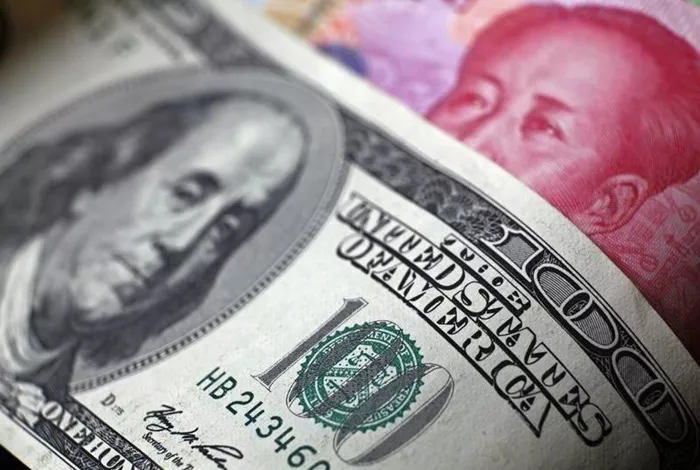Most Asian currencies weakened on Monday, following a decline in the U.S. dollar, as fears of a U.S. recession and the global economic disruptions caused by President Donald Trump’s trade tariffs escalated.
The Chinese yuan dipped after Beijing retaliated against the rising tariffs over the weekend. However, intervention by the People’s Bank of China limited the yuan’s losses.
Other Asian currencies also weakened sharply as President Trump showed no intention of backing down from his aggressive trade tariff plans, aimed at major global economies.
Dollar Hits Six-Month Low as Tariff Concerns Mount
The dollar index and its futures remained steady during Asian trading, after sliding to a six-month low last week and recovering slightly.
Trump confirmed that his tariffs would remain until the U.S. trade deficit with key economies is reduced. Despite a recent slump in global markets, Trump dismissed the concerns, describing his tariffs as “medicine” for the markets.
Last week, Trump introduced plans to impose significant tariffs on several major economies to pressure them into lowering their tariffs on U.S. goods. These tariffs, set to take effect on April 9, come with a warning that more sectors could soon be targeted.
Although protectionist policies usually support the dollar, the greenback faced pressure due to rising fears of a U.S. recession under Trump. Markets reacted by increasing bets on further interest rate cuts by the Federal Reserve, causing U.S. Treasury yields to fall and further weakening the dollar.
China Retaliates With Higher Tariffs
The Chinese yuan’s USDCNY pair rose by 0.4%, reaching its highest level in over three months. This came after Beijing imposed a 34% duty on U.S. goods in response to Trump’s tariffs and threatened further action against Washington.
China, one of the hardest-hit by Trump’s tariffs, now faces a cumulative 54% tariff on its exports to the U.S. This situation is detrimental to China’s export-dependent economy, which could lead to more stimulus measures and monetary easing from Beijing to counter the impact. However, any additional easing would likely put more pressure on the yuan.
Yen Rises as Safe Haven Demand Increases
Among Asian currencies, the Japanese yen stood out, briefly hitting a six-month high as investors flocked to safe-haven assets. Strong wage data also boosted expectations that the Bank of Japan may raise interest rates soon. The USDJPY pair fell by 0.4% to 146.31 yen after dipping as low as 144.82 yen.
Australian Dollar and Other Asian Currencies
The Australian dollar’s AUDUSD pair dropped by 0.3%, with Treasurer Jim Chalmers warning that the U.S. tariffs could hurt Australia’s economy due to its reliance on China. He also predicted more interest rate cuts from the Reserve Bank of Australia this year.
The South Korean won’s USDKRW pair rose by 0.5%, while the Indian rupee’s USDINR pair remained stable at around 85.5 rupees. Reports suggested that India would not retaliate against Trump’s tariffs, as trade talks with Washington were ongoing.
Related Topics:


